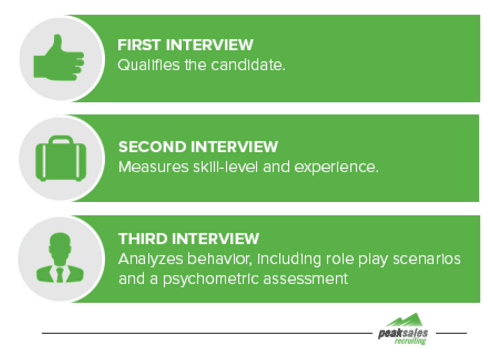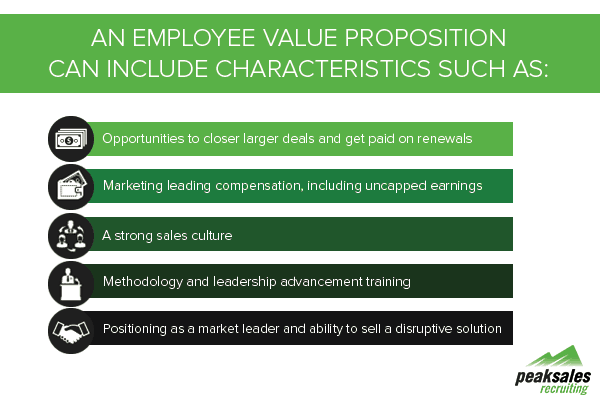
To enhance the ability of HR to find qualified, proven sales talent, sales leaders need to provide deep insight into the sales organization including: team performance, culture, hiring timelines and ideal profiles, compensation plans, and individual development plans.
In the most successful organizations, human resource and sales leaders partner to drive their company forward. They share mutual respect, have structured and transparent communication practices and standards, and are fully aligned with the corporate strategy. However, without a clear structure to facilitate an effective sales and HR relationship, problems can arise that undermine the performance of both departments when trying to achieve their human capital objectives.
Sales Vice Presidents can prevent problems between the two departments by providing HR executives with a clear vision of their team and objectives, and empowering them with the information they need to do their job.
This detailed outline of 10 things HR leaders need from Sales VPs creates a shared foundation for effective sales recruitment and retention initiatives.
1. Performance of Sales Team to Date
The performance of a sales team to date gives HR leaders a clear understanding of what’s working and what’s failing on the personnel side of sales and gives recruiters a key reference point to leverage when courting candidates.
The Boston Consulting Group found that of 22 HR functions, recruiting and onboarding had the biggest impacts on both revenue and profits. If a company experiences growth stagnation and sales teams experience high turnover and low quota achievement levels, HR leaders need to assess the potential gaps in their recruitment process and implement changes that support better outcomes. This often starts with how candidates are assessed during the interview phase and if third-party tools are being properly leveraged — or leveraged at all.
Alternatively, consistently high performance from new sales team members confirms for HR leaders that their hiring practices are working. Moreover, elite salespeople always want to join teams that exhibit an outstanding record of quota achievement. Information about the performance of sales team to date empowers HR with the statistics to substantiate the organization as a market leader while speaking with prospective candidates.
2. Clear Communication and Agreement on Hiring Process and Timelines
Clear agreement on hiring processes and estimated timelines creates a mutually beneficial framework for the recruitment process. VP of Sales should advocate for a rigorous three-tiered interview process that eliminates average and below-average salespeople. This approach leaves only candidates who exhibit the skills, experience, and sales DNA to excel in the specific sales environment.The first interview qualifies the candidate; the second interview measures skill-level and experience; the third interview analyzes behavior, including role play scenarios and a psychometric assessment.
Finding proven sales talent takes longer than recruitment for other roles. Our data shows that across the technology, professional services, and industrial and manufacturing industries, the average time to hire the top 10 percent of gainfully employed salespeople is between 95-125 days. Use this benchmark as a guide, working toward a timeline that works for HR personnel and sales.
3. An Onboarding Strategy
For HR leaders to create a top-notch onboarding program, they need a clear strategy from VP of Sales that aligns with revenue goals. Research from The Sales Management Association indicates the importance of this alignment; B2B sales organizations with excellent onboarding programs exhibit a 10 percent higher sales growth rate and 14 percent better performance than competitors with poor or misaligned onboarding strategies. In these firms, new-hire salespeople also reach productivity 3.4 times faster than counterparts in ineffective onboarding programs.
There are three primary components of an onboarding strategy that VPs of Sales need share with HR: clear objectives for onboarding, pre-hiring materials, and a sales playbook. Each aspect of the strategy ensures alignment across sales and HR around a pivotal process for both teams.
By sharing clear benchmarks and objectives, VPs of Sales give HR leaders a bird’s-eye view of the goals of the onboarding program. Sales-specific reading materials provide HR with a tool to educate new recruits before their first day. And once a new hire arrives at an organization, a detailed sales playbook serves as a textbook during the onboarding process.
By giving HR leaders the resources they need to conduct a thorough onboarding, sales leaders create the optimal environment for new employees to reach productivity.
4. A Strong Sales Culture
Without strong sales culture, HR personnel can’t attract and retain top salespeople. The best talent wants to work and grow in a sales team that is engaging, competitive, and respected within the larger organization. VP of Sales need to diligently work to ensure that these characteristics are a part of the fabric of their company, or HR will struggle with recruitment and retention.
First, a VP of Sales needs to incentivize managers to support the success of their reps every day. Harvard Business School found that managers of high-performing teams offered five to six pieces of positive feedback for every criticism. Combined with a healthy dose of competition and regular performance reviews, this positive foundation develops a culture of continual progress and high achievement.
Second, VPs of Sales need to champion the role of their teams in the wider organization. As sales expert Troy Harrison suggests, if a CEO asks sales to grow the revenue stream by 15 percent but decreases the production budget by 10 percent, it’s setting up the two departments for conflict and failure. Top sales leaders advocate for their department as the source of revenue for an organization. By championing their team within a company, VPs of Sales contribute to a culturally integrated company that appeals to candidates and seamlessly partners with HR.
“The best talent wants to work and grow in a sales team that is engaging, competitive, and respected within the larger organization. VP of Sales need to diligently work to ensure that these characteristics are a part of the fabric of their company, or HR will struggle with recruitment and retention.”
5. Profile of Current Top Performers
A profile of current top performers serves as a blueprint for HR as they seek ideal candidates for sales roles. Mark Roberge, Hubspot’s Chief Revenue Officer refines this profile with a predictive index that he developed during the company’s first year.
Before hiring any reps, Roberge wrote a list of 12 criteria for reps that he thought would correlate with high performance and weighted them by importance. He marked each candidate with scores (from 1-10) in every criterion. After a year, Roberge conducted a regression analysis that correlated interview scores to on-the-job performance. Every year, Hubspot repeats the process, ensuring that recruiters continue to recognize the profile of top performers as the company scales.
Sales leaders who want to adapt Roberge’s method can start with a list of their top salespeople and the characteristics that set these reps apart. Pass these criteria to HR leaders, and ask internal recruiters to rate candidates according to these metrics.
6. Identified Skills, Experience, and DNA
These three characteristics — skills, experience, and DNA — help recruiters to narrow a group of potential salespeople to those who are most likely to excel in their organization’s unique selling environment. Since over 80 percent of employee turnover results from bad hires, the more specific VPs are with HR leaders about the exact characteristics of an ideal hire, the lower the chances of a hiring mistake.
Primary Skills:
Here are some of skill sets of an outstanding salesperson:
- Ability to connect prospect needs with a solution set that is tailored to meet those needs
- Ability to collaborate with prospects and persuade them to achieve positive results
- Strong ability to successfully negotiate and close deals
- Excellent product and market knowledge
- Excellent ability to minimize a prospect’s perception of risk
- Ability to sell against profit/loss statements
- Ability to think creatively and problem solve
- Ability to sell to multiple stakeholders
These identifying characteristics give HR leaders — and their teams — a baseline for qualifying candidates during interviews.
Qualifications:
The best salespeople exhibit an extensive track record of sales achievement. VPs of Sales benefit from detailing the level of experience expected from ideal candidates such as “five years of successfully surpassing quota within the same industry.”
If a sales organization needs to hire entry-level salespeople, sales leaders should encourage HR personnel to focus their efforts on recruiting sales program graduates. Current research suggests they onboard 50 percent faster and are 30 percent less likely to turnover than on other reps.
Sales DNA:
The Harvard Business Review identified empathy and ego drive as the two key components of sales DNA. Robert N. McMurry summarizes, “The salesman’s empathy, coupled with his intense ego drive, enables him to hone in on the target effectively and make the sale. He has the drive, the need to make the sale, and his empathy gives him the connecting tool with which to do it.” The synergy between these two traits creates the perfect combination to drive and close leads — ask HR to test candidates for these attributes using 3rd party psychometric assessments.
7. A Short, Compelling Job Description
A short job description ensures that a posted job accurately reflects the key metrics, required qualifications, objectives of the open position, and why the company is an ideal place to advance a candidate’s career and earning potential. VP of Sales can ask managers to list five to ten primary responsibilities of each open role in their order of importance. These responsibilities should reflect the primary goals of the position without extraneous detail. Also, compare the job description with listings by competitors. The ideal job description will surpass the competitors’ in its clarity, brevity, and substance.
Job descriptions should include a short brief that indicates the reason for hiring and entices candidates to consider their team. InsightSquared, for example, included this short and catchy brief for their Business Development Representative (BDR) role:
These job descriptions are essential for empowering HR to recruit outstanding salespeople to their organization. Here are three templates you can put to use, depending on the role you’re hiring for:
8. Key Differentiators
To promote the sales department as a unique and rewarding place to work and earn a large paycheck, HR needs a list of key differentiators that highlight a company’s positioning as an employer of choice for salespeople. Richard Mosley, author of The Employer Brand, argues that company leaders and other executives need to work with HR to help solidify their “pitch” to candidates.
In particular, VP of Sales can create an Employee Value Proposition solely for sales teams and for specific roles within those teams.
Companies that are startups rather than established sales organizations can frame their sales team as up-and-comers, emphasizing the prestige of their funding, top advisors, investors, and the material impact that candidates will have on the success of the company. These key differentiators give HR talking points for the interview process, ensuring that recruiters communicate the value of working for their organization.
9. Clearly Defined Compensation Package and Ranges
To guide the hiring process, create an on-target earnings (OTE) for HR that includes 50 percent base pay and 50 percent commission for salespeople in non-leadership functions. This compensation ratio entices top salespeople to reach for higher levels of performance while offering some stability.
Above-average pay ranges also give recruiters the flexibility to negotiate with the ideal candidates in a competitive hiring market where top performers will only consider opportunities that allow them to achieve their large financial goals. Compare the packages to other companies in the market, and if possible, move up the compensation to incentivize prospective reps.
Make sure to relate any additional perks to HR beyond the standard company benefits. Sales roles often provide extra flexibility on the job, travel opportunities, and annual trips with the sales teams. In the age of perks, these small benefits can have a meaningful impact on recruitment efforts (especially with millennials).
10. Professional Development Plan
A professional development plan helps HR to know the skill sets that newly hired salespeople need to acquire to grow in their current roles and work toward leadership positions. With this information, HR can bolster the accomplishments of salespeople and encourage retention.
According to Salesforce, the average cost of losing a single core sales rep can reach up to $1 million in lost revenue, productivity, and replacement efforts. To prevent this kind of loss, VP of Sales need to give HR an explicit professional development plan that specifies the business strategy for developing employees.
This document should include both the long-term and short-term objectives for the sales team, as well as competency development for sales reps. These competencies must include a balance of hard and soft skills — such as technical knowledge, negotiations training, and communications skills — that directly link to the goals of the sales team.
The most effective plans also establish a development approach for frontline managers and leaders. Propose workshops and projects that continually stretch the skill level of top talent, requiring increased ingenuity and an expert grasp of a complex sales landscape. By supporting a mastery of sales skills, HR keeps even the strongest sales leaders and reps engaged on the job.
Effective Recruiting Requires A Strong HR & Sales Relationship
This partnership between sales and HR is the backbone of effective recruitment and retention practices. With these ten things from the Vice President of Sales, human resource leaders can build a strong talent pipeline of salespeople that will consistently drive profitable revenue and achieve their sales targets.
relpost-thumb-wrapper
Related posts
close relpost-thumb-wrapper
Eliot Burdett
He co-authored Sales Recruiting 2.0, How to Find Top Performing Sales People, Fast and provides regular insights on sales team management and hiring on the Peak Sales Recruiting Blog.
Latest posts by Eliot Burdett (see all)
- 20 Of Our Favorite Books About Sales Management and Sales Leadership – October 20, 2023
- How To Make Progress On Your Sales Goal Without A Sales Leader – September 15, 2021
- Augment Your Recruiting Strategy During “The Great Resignation” – July 26, 2021













